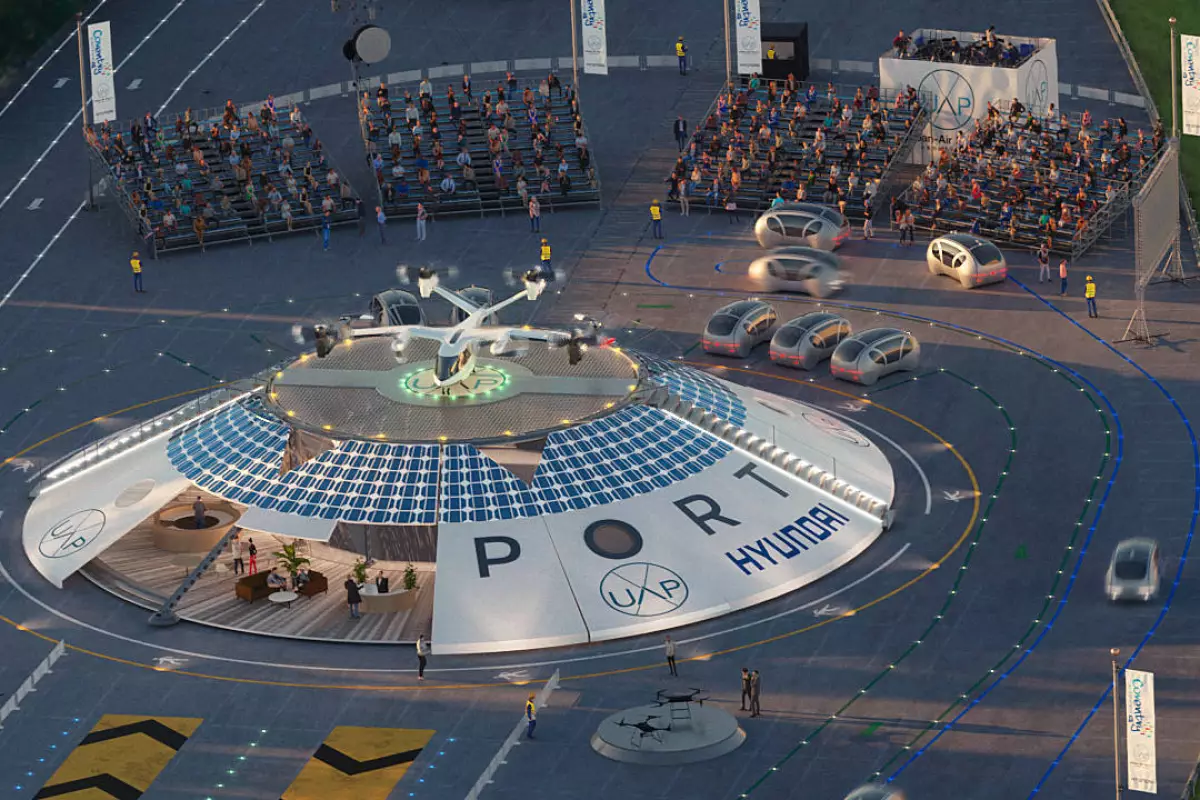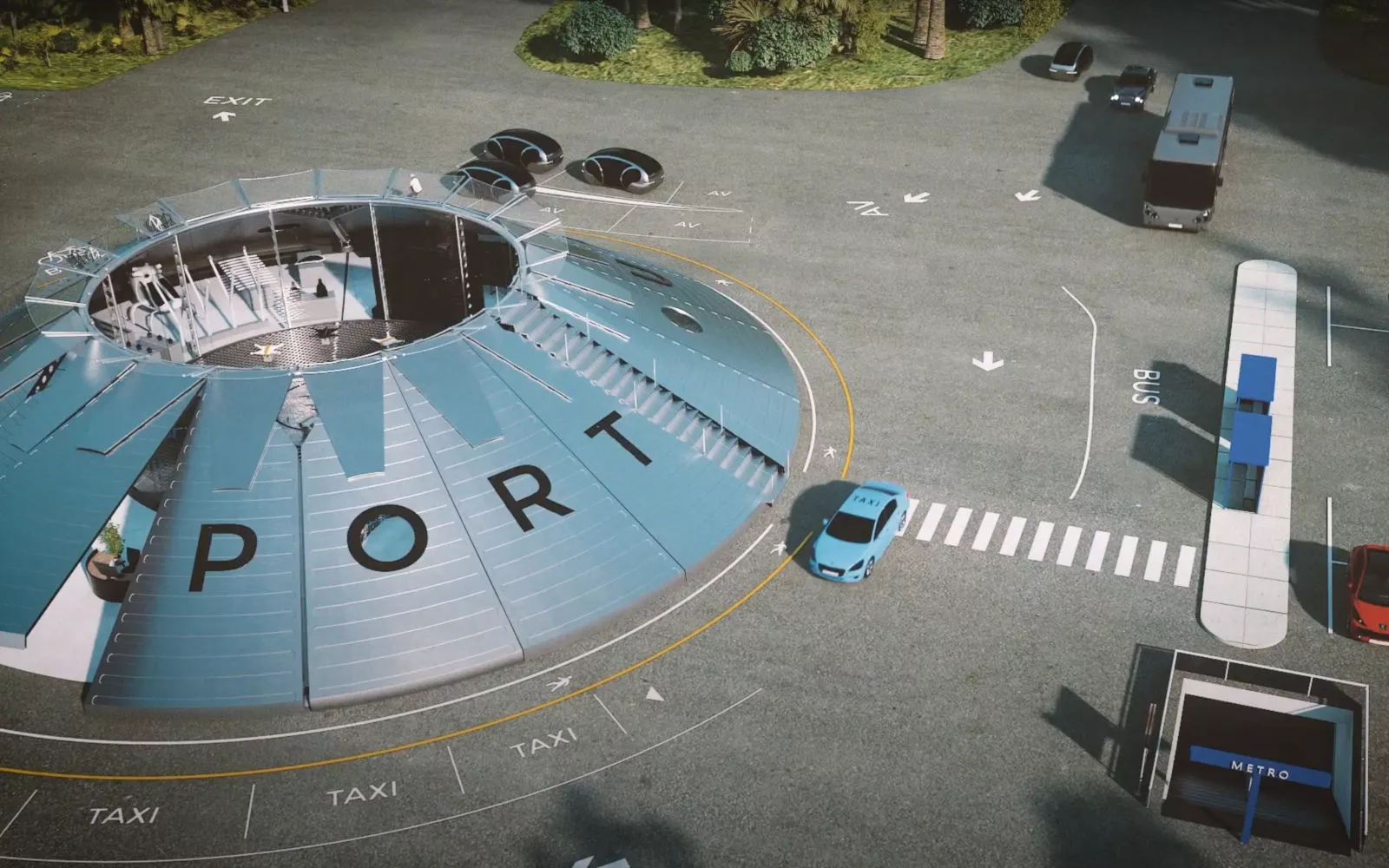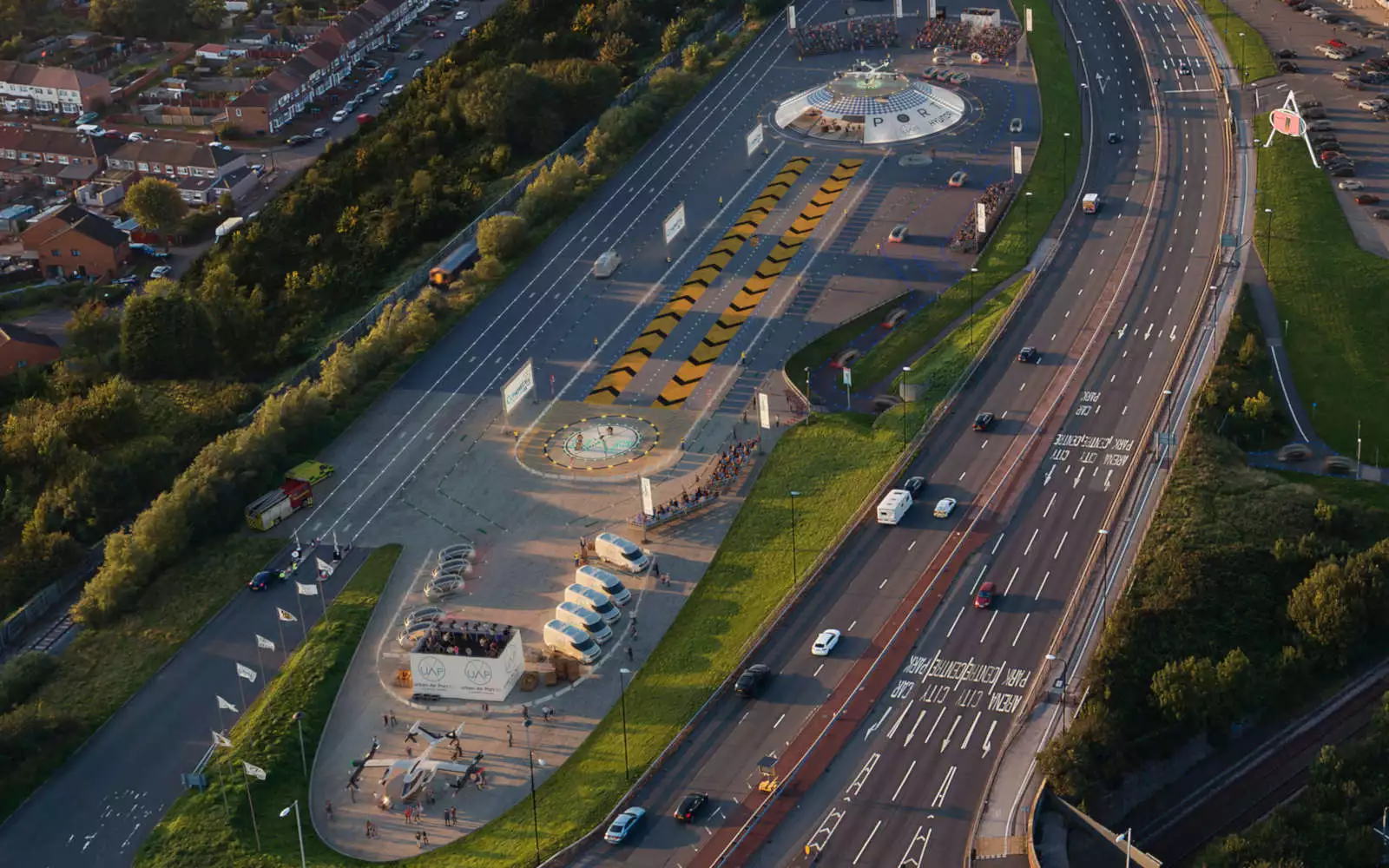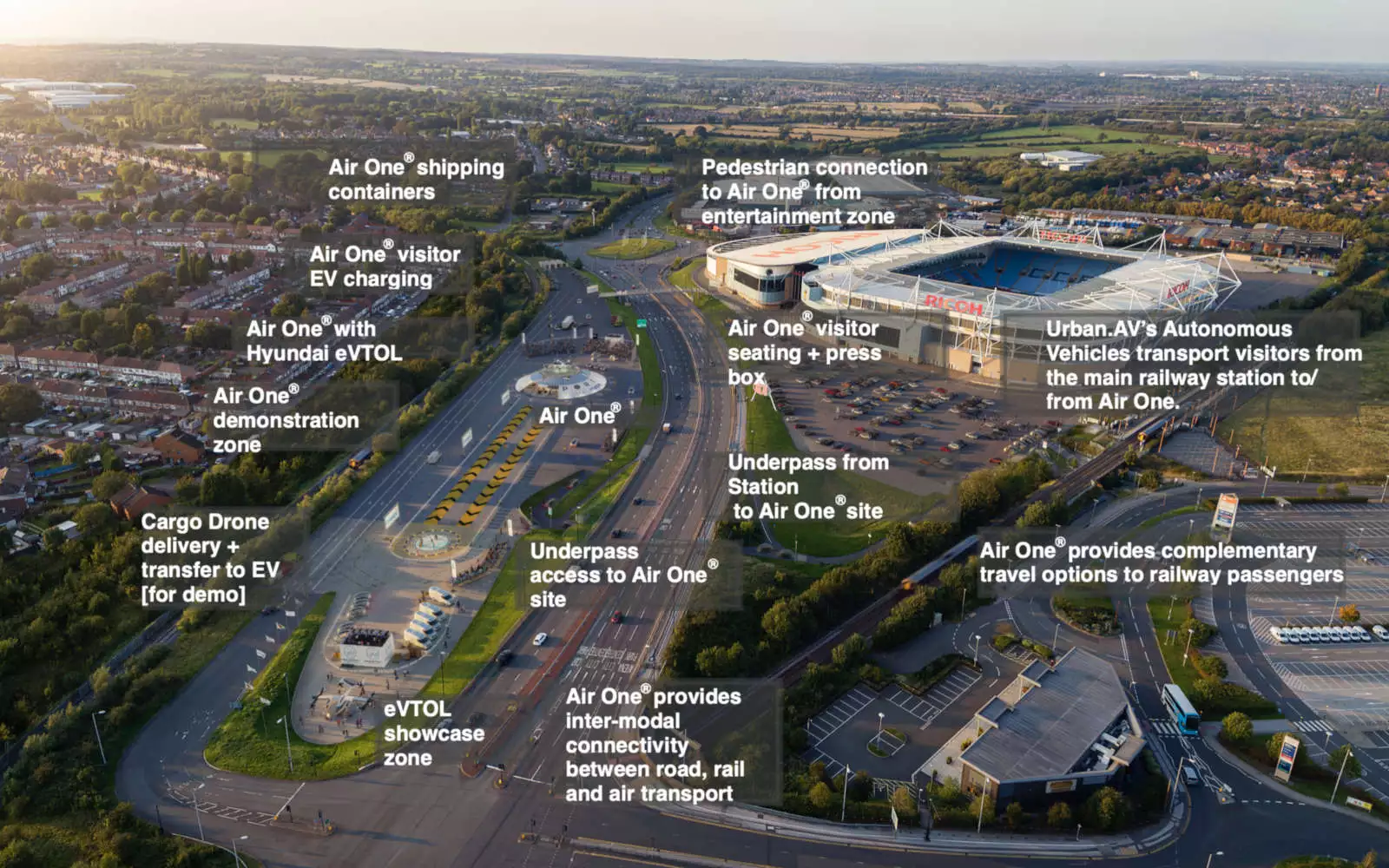Hyundai is serious about its eVTOL air taxi division, and has partnered with the UK Government, the Coventry City Council and Urban Air Port (UAP) to open a dedicated eVTOL and drone launch facility – the "world's smallest airport," in England later this year.
Yes, this year: 2021. A year in which the projected number of commercially operational eVTOL air taxis currently stands at zero. Indeed, we're likely looking at 2024-25 at the absolute earliest before the first tentative pilot programs go live and start carrying passengers around. Hyundai itself is estimating more like 2028.
So as we all wait for eVTOLs to get their act together, this platform, replete with a set of spectator bleachers, will spend most of its time gently depreciating in the famous English rain, interrupted by occasional technology demonstrations by cargo drone companies like Malloy Aeronautics, which has pledged to make some public flights from the site.
The infrastructure in question will be built by UAP on a thin wedge of land just over the A444 highway from the Ricoh Arena and Coventry Arena tube station. It's described as a "pop-up" piece of modular architecture that can be lifted and shifted as necessary. The retractable landing platform itself is 40 meters (131 ft) in diameter, bigger than the largest H3 helipads, so it can certainly accommodate choppers if necessary. Conversely, UAP says "the physical footprint of an Urban Air Port® is 60% smaller than a traditional heliport" – a statement we find odd considering that the landing pad is considerably larger, and it's surrounded by an even larger cone.
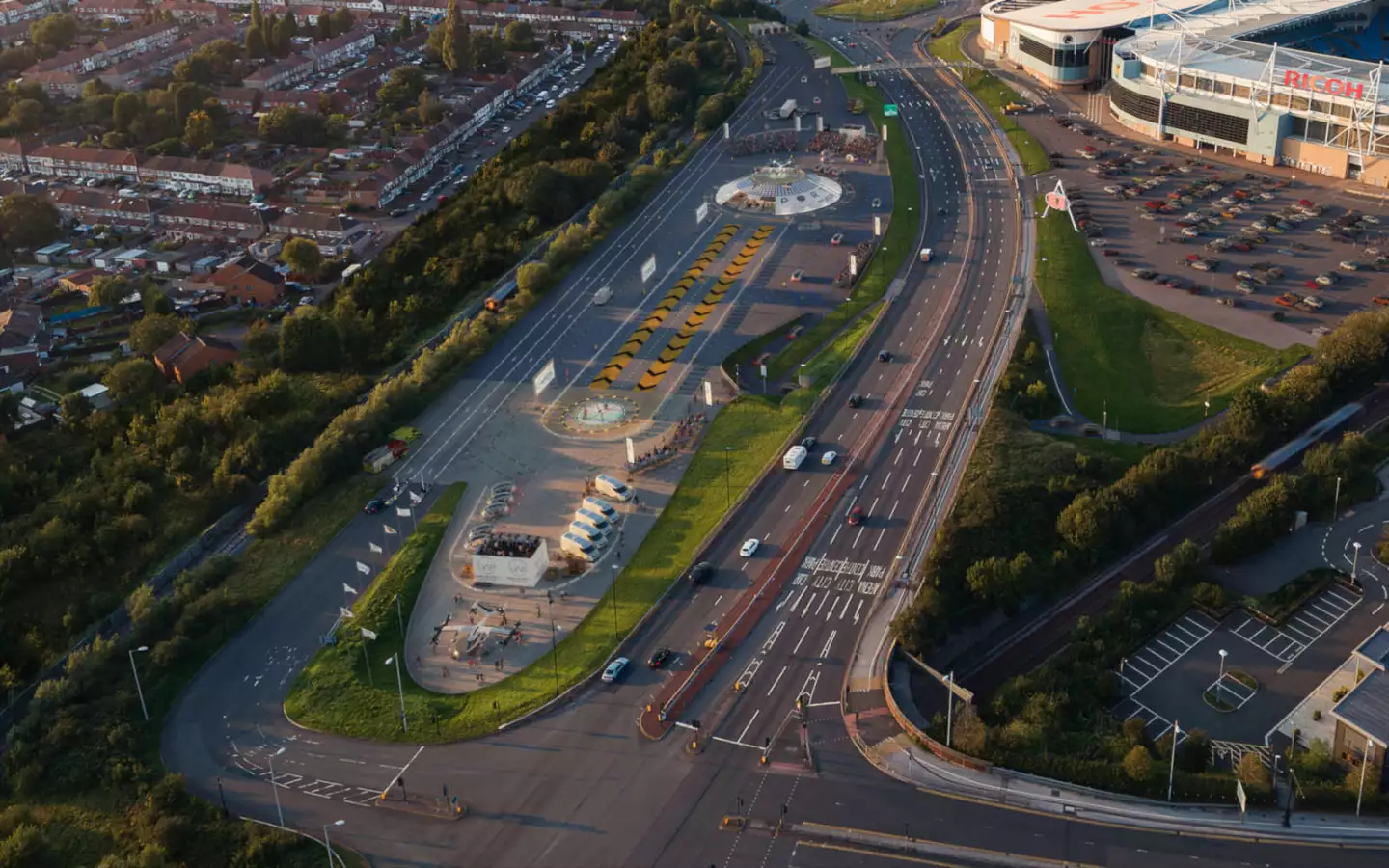
Beneath the conical covers radiating out from the landing zone, it'll be equipped with charging facilities, although exactly what it's got in that department is yet to be specified. Certainly, eVTOL charging will have to be incredibly fast and powerful once these things are flying bulk passenger missions, but given that this is so far off, it might as well just have standard wall plugs to start with.
Other features that allegedly make this jigger superior to a flat piece of concrete appear to include passenger lounges with cafes and bars, and what appear to be maintenance and parking spaces for the aircraft between missions. There may be cargo loading and logistics facilities. In the Coventry installation, there will also be an underpass built to link foot and vehicle traffic across to the other side of the freeway, as well as taxi dropoff-pickup arrangements – but you better believe UAP will happily build you one on a floating platform, or on top of a skyscraper, if you like.
The latter would appear to raise some issues. If that landing pad is 40 meters across, then the entire structure is somewhere around double that. Good luck finding a skyscraper with an 80-meter (262 ft) diameter clear circle on top of it big enough to plonk one of these things on.
UAP founder and Executive Chairman Ricky Sandhu is keen to avoid the term "vertiport" when referring to eVTOL stations, claiming he doesn't understand what it means. "It's called the Urban Air Port because we didn't really like the term 'vertiport.' We didn't really understand what it meant. With all the different types of vehicles, we thought this infrastructure is actually a mini airport ... It is an airport. People have to board and de-board. You have to process passengers. You have to land aircraft. You have to maintain them, charge them. We thought Urban Air Port is a better term."

So it seems UAP wishes to force this new mode of transport into the ugly and awkward mold of today's air travel, rather than having these things operate as the magical sky Ubers we're all envisaging. The idea of adding "passenger processing" to the daily commute gives the entire idea of air taxi commuting a nasty smell; how often would you take a train if you had to go through all the crap you're put through at an airport?
And indeed, why do we need a fancy structure like this at all? Cargo drones and eVTOLs alike can take off and land on more or less any flat bit of ground. Raising them up like this might keep people from running underneath them when they're coming in to land, but so would a fence, or basic survival instinct. Lifting and lowering that landing pad every time a bird leaves or lands will look cool, but is it necessary?
Color us skeptical about the utility of this whole thing, as well as the thoroughly befuddling timing of the project, but either way, Hyundai and UAP have talked £1.2 million (US$1.64 million) out of the UK Government's Future Flight Challenge program and it's scheduled to fling its doors open later this year.
UAP says its design is flat-packable and modular enough to be deployed in remote parts of Africa, where it can democratize fast, convenient transport. The company goes so far as to show a rendered video of one of these stylish domes being erected in the middle of a vast plain in Rwanda and becoming the beating heart of a thriving transport hub that "spreads social equity," and connects and elevates sub-Saharan Africa like never before. You sure can't accuse these guys of lacking vision.
Meet Ricky Sandhu in the video below.
Source: Hyundai / Urban Air Ports
